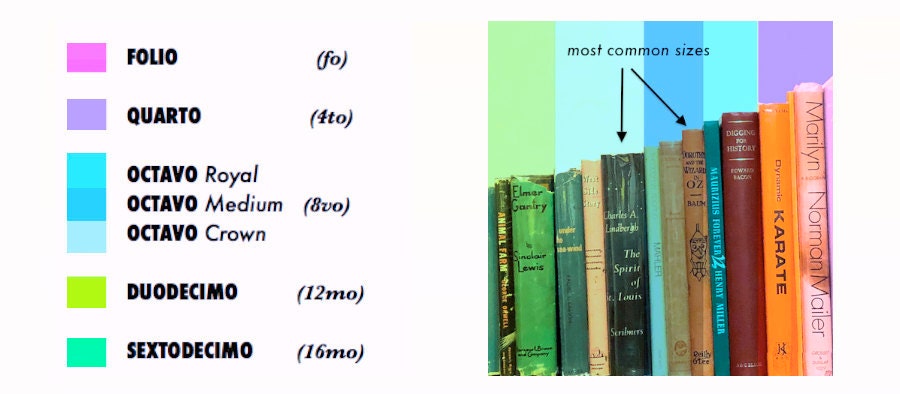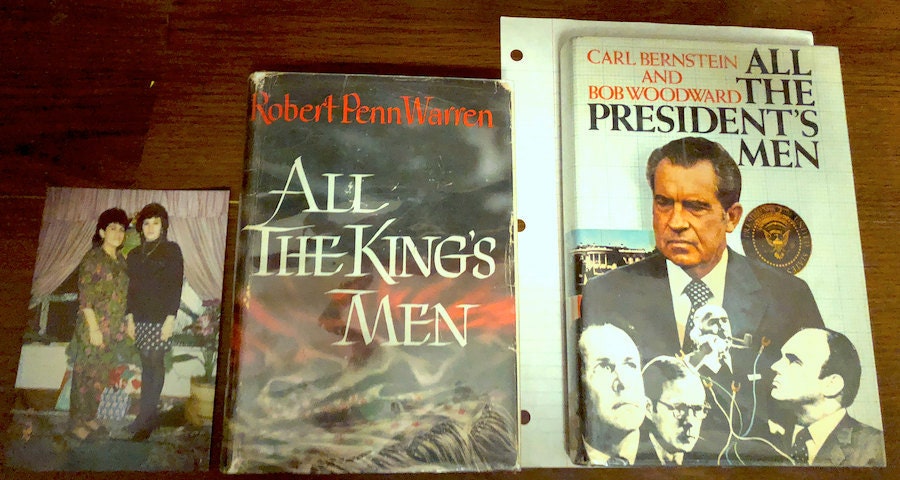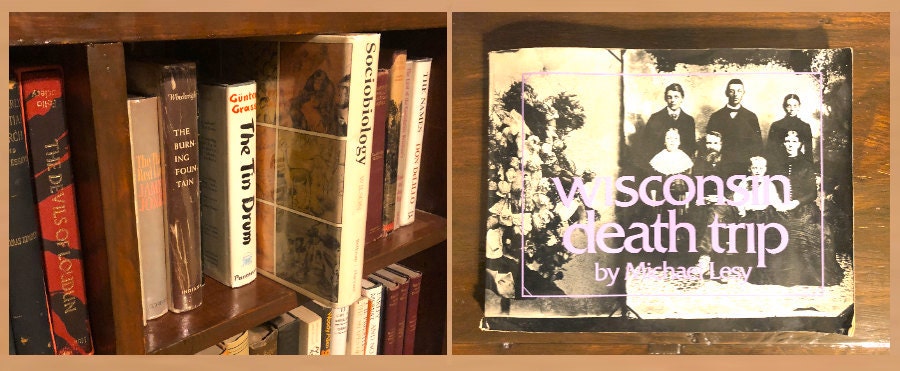It's 2019 and the question on all of our minds—you'll forgive me for stating the obvious here—is what's the difference between a 12mo book and a 16mo book?
Well, I'm going to answer that question. I've made this guide to help you understand those inscrutable latin abbreviations booksellers love to stick in their descriptions before they proceed to tell you just how very good the condition of their book is—folio, 8vo, 4to, 4loco and so on.
A lot of places on the web attempt to explain these sizes in terms of centimeters or in terms of a giant sheet of paper that folds into itself. I'm just going to show you what they look like.


As you can see, books come in many different sizes. However, most books are octavos, and most octavos are one of two sizes.

Depicted above are the two most common book sizes: A medium octavo, All the President's Men (same size as Dorothy and the Wizard of Oz in the preceding photograph) and a crown octavo, All the King's Men (same size as Spirit of St. Louis) whose height is not quite Presidential. For reference, there is a 4" x 6" photograph on the left and a standard sheet of notebook paper (8.5" x 10.5") beneath All the President's Men. The majority of books published in the twentieth-century are one of these two sizes.
But there's more to a book's size than just its height. Most books are taller than they are wide (deep, that is—not thick). But some books are square or even oblong (wider than they are tall).

Above: the oblong book, for people who hate shelves.
